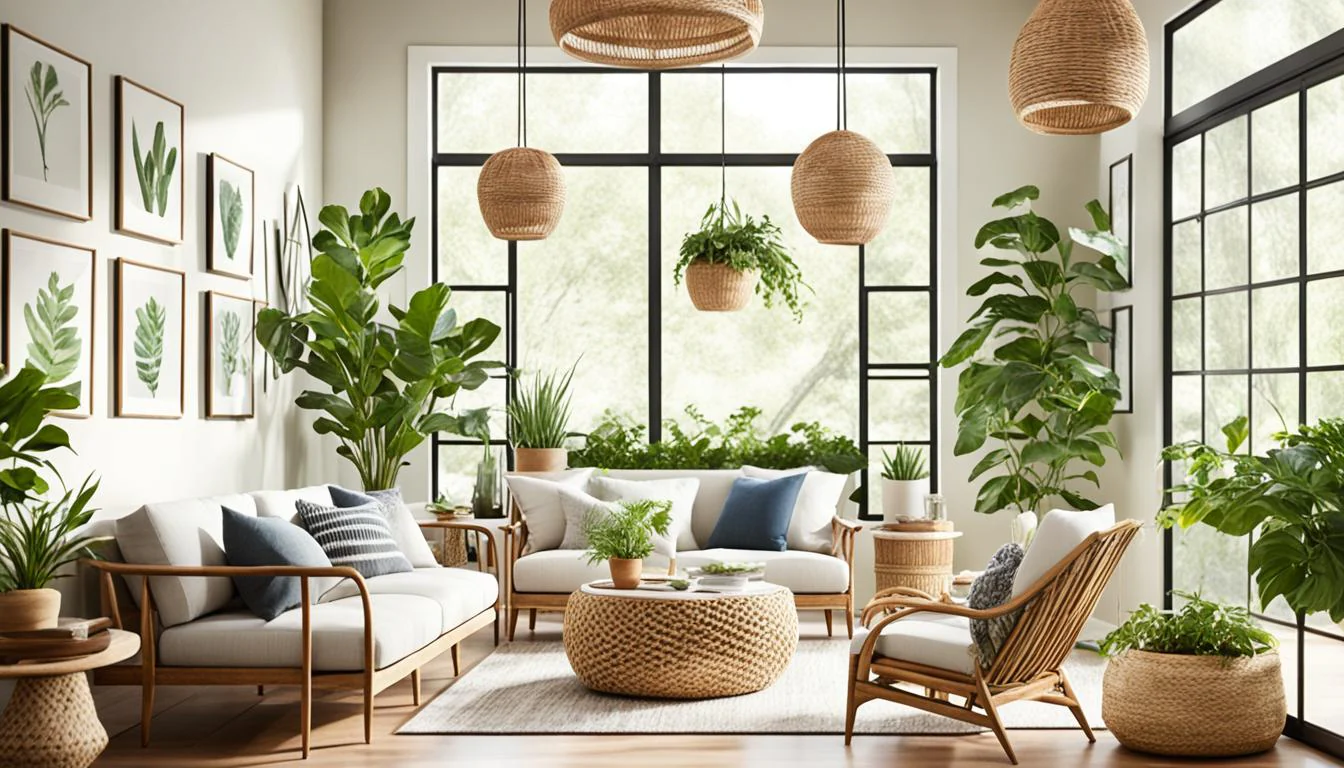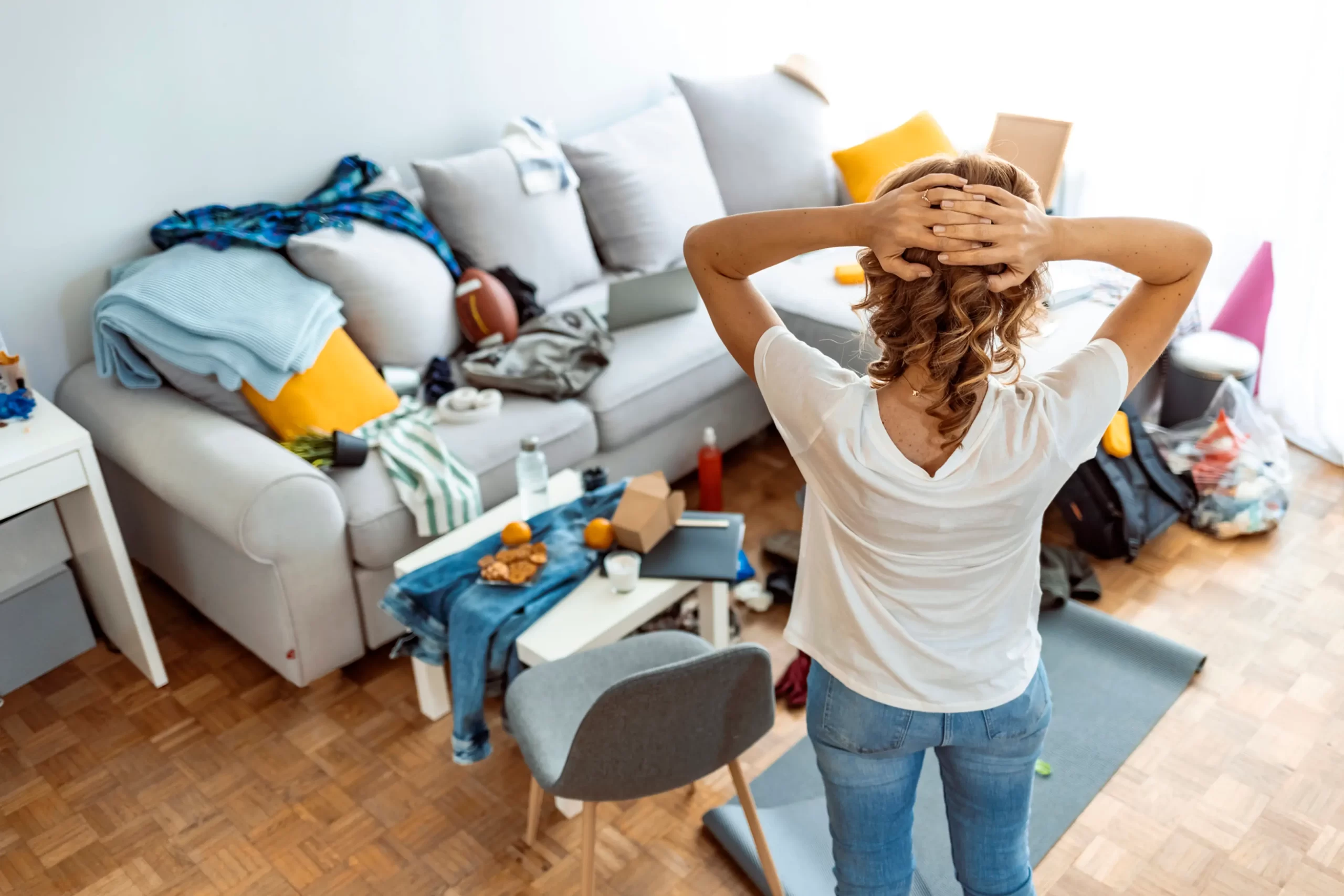Indirect nature experiences make the best use of naturally formed shapes, colours and materials found outdoors in presenting them inside as integrative elements of the environment. When not designed for either cognitive restoration or restoration of social interactions, these elements can be less costly and complex than providing direct nature, such as plants and aquariums, in many indoor settings.
Landscape paintings, wall murals and just about any artwork with a natural theme is a good way to bring nature indoors. Warm earth tones mixed with natural accessories like sisal rugs are great for bringing the outside in.
Natural Materials
Organic materials indeed have been the largest shaping force in the green design discussion. Their nature fits for nearly all design styles and may be the best way to achieve a healthy clean feeling which resonates with the majority people.
Among the quickest was a focus on plants: a living gateway to nature, rather than a mere nod. But we’re not just talking one plant per room, we’re talking pine-cone lamps, hanging terrariums, potted herbs that survive in the kitchen and bathroom from all the moisture – the list goes on.
Another pretty option for decorating is to print nature photographs, such as trees, foliage, flowers, mountains, etc and put them in frames made of upcycled wood. Another option is to display paintings of landscapes, mountain views, and essentially anything that depict nature for bringing outdoors in and making it feel like you have more space and that you can be more relaxed. Water walls or fountains are also another option for helping create an atmosphere that helps one relax and de-stress.
Biophilic Design
New studies detailing the benefits of nature are coming out weekly, and in the past year, the WELL Building Standard, an earthquake-like force in the built environment, has included biophilic design as an integral part of creating health-promoting spaces. Unfortunately, implementation of these protocols is likely to be more difficult for some spaces than initially imagined – whether due to budget constraints; the presence of allergies or sensitivities in the occupants; or a confined area that cannot accommodate a significant amount of nature.
Further creative adjustments of the interior environment are possible – delivering nature indoors in the form of wood, woven fabrics, natural lighting and views of greenery. Such simple solutions have a measurable impact on occupants’ wellbeing.
Working with natural materials such as wood and stone can bring a space to life through texture and authenticity, and connecting it with nature. This sense of liveliness and authenticity can be heightened by incorporating natural materials such as flooring and wall cladding throughout the project, all the way through to furniture and decor. Use other textures inspired by natural materials, like canvas or rattan to add some extra visual interest; For that extra ingredient, think about adding windows and skylights to let some sunlight in – it will have your customers feeling rejuvenated.
Smart Technology
Using these smart technologies in your home – for example, an outdoor security camera connected to your home assistant inside, linked to your connected terrariums – may enable you to interact more frequently with the natural world. For instance, when it senses that the weather outside is good and it asks for your location, it finds that you never left the house and alerts you that it has seen that you haven’t been outside for a long time.
Involving nature directly by moving plants, water and sky into indoor environments is one of the most involving types of nature experiences; other approaches for capitalising on natural lighting may involve adding skylights or reflective materials; or skylights and reflective materials are utilised to optimise natural light; and fireplaces or waterwalls can bring air, fire and weather into rooms; or sound power can be taken advantage of through water fountains and aquariums.
Innovative technology brings many benefits for both homeowners and interior designers, such as:
Nature-Inspired Architectural Solutions
Biophilic design per se is more an ethos than a trend, riding high on the back of a recent cultural shift towards an environmental conscience, and sales pitches of it are increasingly to be found in the sustainability-driven marketing of new schemes, as well as retro-fits of existing housing. Developed as an integrated ‘theory’ of good design, biophilic design argues that good design reduces stress and contributes to human and environmental wellbeing. It’s commonly offered up as a means of creating eco-friendly living spaces, but a closer look at its authors’ expertise reveals its broader ambition of establishing ‘healthy’ relationships with nature based on what they see as more harmonious interactions between the two categories of ‘nature’ and ‘us’.
This applies to biomimicking rammed earth structures as well as green roofs, the kind of architecture that looks to nature for inspiration. There are innovative projects related to biomimicry happening today, like the 51-storey ‘farmscraper’, which would incorporate urban agriculture along with natural cooling using green walls.
Organic forms, curves and patterns from nature can add vitality and movement to the interiors, and a water feature, indoor fountain or pond in the home can greatly enhance the fluid energy by introducing sounds directly from nature.




